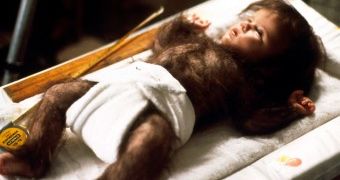Our closest living relatives are chimpanzees and bonobos. But their genomes, besides being a proof of relatedness to us, also display anomalies, as revealed by a new research published in the journal "PLos Genetics." These weird DNA areas may explain one of the most mysterious intervals in our own evolution: 5.4 million years ago when humans and chimps diverged from a common ancestor. Modern chimps and bonobos have split from the ancient chimps just about 1.3 million years ago.
The team led by David Reich, a population geneticist at the Broad Institute in Boston, used a random sequencing approach for comparing bonobo and chimp DNA, then compared the similar sequences to complete chimp and human genomes. Surprisingly, 453 DNA sequences, either in bonobos or chimps, appeared to resemble more those from humans than each other.
The team attempted to explain this via the common ancestor of chimps, bonobos and humans, who carried at least two variants of each of the 453 genes 5.4 Ma ago. During their evolution, chimps may have inherited one of these variants and bonobos the other, while the humans inherited an aleatory variant kept by either chimps or bonobos. These "genetic anomalies" may be a genetic clue to the genome of our common ancestor with the chimps and bonobos. "Information gets frozen in time, and it doesn't go away. You can actually learn about the process of speciation - how large the populations were, whether there was genetic exchange," Reich told NewScientist.
In a 2006 research, the same team had found evidences that ancestral humans could have interbred with the ancestral chimps well after the 5.4 Ma split, probably around 4 Ma ago. The new research could enable the team to see how the interbreeding occurred, and if humans, chimps or bonobos are hybrid species.
The method employed in this research could be used in the case of the Neanderthal genome, explaining more about its evolution.

 14 DAY TRIAL //
14 DAY TRIAL //